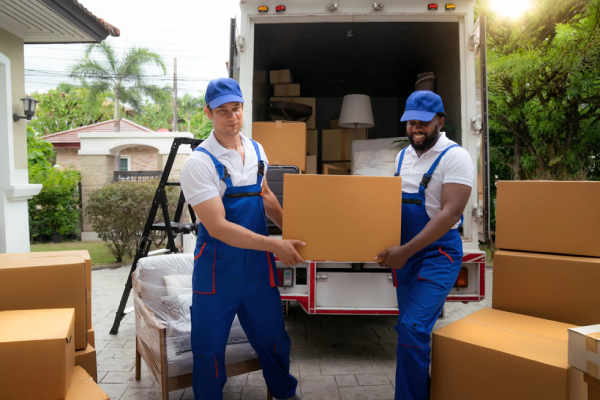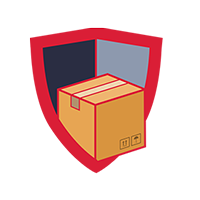Moving your kitchen is often the most challenging part of relocating. Kitchens contain a wide range of fragile and heavy items that have different shapes and sizes, from glassware and dishware to appliances and utensils. Knowing how to pack a kitchen to move is important to prevent damage, stay organized, and make unpacking easier in your new home. In this article, we will provide a guide on how to pack kitchen items for moving safely, efficiently, and in a way that meets the standards of professional moving companies in British Columbia.

Why Proper Packing of Kitchen Items is Important
Before investigating how to pack kitchen for moving, let’s know the importance of proper packing of kitchen items:
- Protection of Fragile Items: Kitchenware such as plates, glasses, and appliances will break easily during the move. Using correct packing materials and techniques prevents costly damage during transit.
- Efficient Organization: If you label and sort items properly, you can save time both during the move and when setting up your new kitchen.
- Safety: Knowing how to best pack kitchen for moving reduces the risk of injury from sharp utensils or heavy items when they shift in boxes.
- Compliance with Professional Standards: Licensed and insured moving companies in British Columbia such as Secure Moving Company, follow strict guidelines for packing. They want to be sure about the safe transport of your belongings.

Essential Packing Materials for Kitchen Moves
One important factor to consider is having the correct tools. Here are more details about what materials to use and how to pack a kitchen for a move:
- Cardboard Boxes: You should have them in different sizes (small for heavy items, medium for appliances, large for lightweight goods).
- Dish Pack Kits: Double-walled boxes with inserts for plates and glassware are necessary.
- Packing Paper: You will need ink-free and acid-free paper for wrapping and cushioning.
- Bubble Wrap: For extra protection of fragile items and glassware, you will need them.
- Packing Tape: You need strong and wide tape to seal boxes securely.
- Storage Containers: For pantry items and small loose objects.
- Labels and Markers: When you label your items clearly, you will find and organize them better when arriving in the new place.
- Protective Packaging: Biodegradable packing peanuts or foam for filling empty spaces are good choices.
Step-by-Step Guide: How to Pack Kitchen Items
If you want to know how to pack kitchen for a move, here is a guide:
- Declutter and Sort
At first, you should go through all the cupboards and drawers. Donate or discard items you no longer use or need. Sort remaining items into categories: dishware, glassware, cutlery, pots and pans, appliances, pantry goods.
2. Prepare an Essentials Box
Prepare a small box with items you’ll need immediately before and after the move: a few plates, cups, utensils, a pan, dish soap, a towel, and a small appliance like a kettle or coffee maker.
3. Gather All Packing Materials
Make sure you have enough boxes, paper, bubble wrap, tape, and markers before starting to pack your kitchen wares.
4. Pack Items You Use Least First
Start with items you rarely use (holiday dishes, extra utensils, cookbooks, specialty appliances). Pack them first, and some days before moving.

5. Packing by Category
If you want to know how to pack a kitchen to move, consider packing it by type:
Dishware (Plates, Bowls, Cups)
- Wrap each item individually in packing paper or bubble wrap.
- Stack plates vertically (like records) in boxes lined with crumpled paper for cushioning.
- At the end, fill gaps with more paper or packing peanuts to prevent shifting.
Glassware
- Use cell kits or wrap each glass in several layers of packing paper.
- Place glasses upright in boxes, never on their sides.
- Fill empty spaces with paper or bubble wrap.
Cutlery and Utensils
- Bundle knives and sharp items in dish towels or bubble wrap, then secure with rubber bands.
- Finally, place all utensils in a container or wrapthem together in paper.
Pots and Pans
- How do you pack pots and pans for moving? We suggest that you stack pots and pans with packing paper between each piece.
- Place heavier items at the bottom of the box, and put lighter ones on top.
- Do not forget to use small or medium boxes to avoid making boxes too heavy.
Small Appliances
- They are like toaster, blender, etc that are better to pack in their original boxes.
- If you do not have their original boxes, wrap each appliance in packing paper or bubble wrap, secure cords, and fill empty spaces in the box with paper.
Pantry and Food Items
- Throw away expired or perishable foods.
- Then pack sealed and non-perishable items in small boxes or storage containers.
- Use coolers for refrigerated goods if you are moving locally.

Labeling and Organizing Kitchen Boxes for a Smooth Move
We investigated how to pack a kitchen to move. But labeling is very important. You should label every box with the contents and the room it belongs in, like “Kitchen – Pots and Pans,” to make moving and unpacking simpler. Mark boxes as “Fragile” or “Heavy” to alert movers for careful handling. Tracking what is packed by numbering each box and maintaining an inventory list makes it easier to find items quickly when unpacking.
Common Mistakes to Avoid When Packing Kitchen Items
You should know how to pack heavy kitchen items as well as fragile ones. Avoid these mistakes while packing kitchenwares:
- Overloading Boxes: Heavy boxes are hard to lift and more likely to break.
- Inadequate Cushioning: To avoid breaking, fragile objects need cushioning.
- Last-minute packing: Careless and last-minute packing can result in errors and damage.
- Bad Labeling: Unlabeled boxes slow down unpacking and create confusion.
- Ignoring Safety: If heavy objects or knives are not secured, you will face some accidental happenings.
Read More: To ensure the safety of your fragile kitchen items, avoid common packing errors. For detailed guidance, please refer to our article on how to pack fragile items for moving. Protect your valuables with expert packing tips
Storage Tips for Kitchenware During the Move
To understand how to pack a kitchen to move, consider these tips:
- Climate Control: If you are storing kitchen items for a long period, use climate-controlled storage to prevent damage from humidity or temperature changes.
- Assembling: Place heavier boxes at the bottom, and lighter boxes on top to avoid crushing contents.
- Accessibility: Store the essentials box and frequently used items near the front of the storage area for easy access.
Finding Professional Packing Services in Vancouver, Burnaby, and Richmond
Many trustworthy moving companies in Vancouver offer full-service packing with high-quality materials and trained staff to ensure your belongings are safely packed. When you are searching for professional packing services in Vancouver, Burnaby, and Richmond, it’s better to choose licensed and insured moving companies that specialize in kitchen packing and follow industry standards for packing, labeling, and transporting kitchenware. To find the right company, compare reviews, insurance coverage, experience, and pricing, and always request a written estimate that clearly outlines the packing materials and services included. If you want a reliable and efficient moving company in Vancouver, make sure to choose one with excellent customer feedback and comprehensive packing options tailored to your needs. This will help ensure a smooth and stress-free relocation experience.

Comparing Packing Methods and Moving Companies
You know how to pack kitchen for moving, but here is a comparison between choosing packing service providers or doing it yourself:
| Feature | DIY Packing | Professional Packing Services |
| Materials Provided | Must purchase separately | Included in service |
| Packing Time | Longer, needs planning | Faster, handled by experts |
| Protection Level | Depends on skill/materials | High, uses industry best practices |
| Insurance | Limited | Full coverage for packed items |
| Cost | Lower | Higher, but includes materials and expertise |
| Convenience | needs personal effort | Stress-free, hands-off |
Secure Moving Company, Your Reliable Partner
If you’re looking for a reliable and professional moving experience in Vancouver, Burnaby, or Richmond, Secure Moving Company is an excellent choice. With years of expertise in moves, Secure Moving uses only high-quality packing materials and follows industry rules to ensure your kitchenware arrives safely. For peace of mind and a smooth transition to your new home, Secure Moving is a trusted partner for all your packing and moving needs. Contact us now to reserve our services.
FAQs
- What’s the best way to pack fragile kitchen items like glassware and dishes?
Wrap them carefully in bubble wrap or towels and pack tightly in strong boxes. - Can moving companies in Vancouver help with packing kitchen items?
Yes, many moving companies in Vancouver such as Secure Moving offer packing services for kitchen items. - How should I label boxes containing kitchen items?
Label boxes clearly with “Fragile” and list what’s inside, like “Glassware” or “Dishes.” - What packing materials do I need for moving kitchen appliances?
Use sturdy boxes, bubble wrap, packing paper, and strong tape to protect appliances. - When should I start packing my kitchen before the move?
Begin packing non-essential kitchen items about two weeks before moving day. - How can I avoid damage to my kitchenware during the move?
Pack securely, don’t overfill boxes, and handle everything gently.









